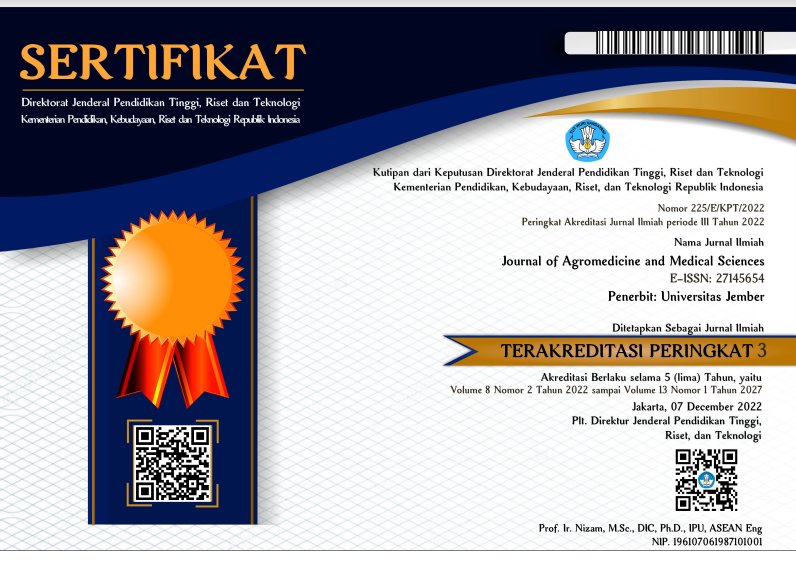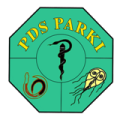Analysis of Determinants of Tuberculosis in Stunted Toddlers in Rambipuji, Jember
DOI:
https://doi.org/10.19184/ams.v10i1.46500Abstract
Tuberculosis (TB) and stunting remain serious health problems in Indonesia. Stunting can impact a child's ability to resist infections, including TB. Stunted toddlers are more vulnerable to contracting TB compared to those with normal nutritional status. This research aims to explore the relationship and influence of TB risk factors on the occurrence of TB in stunted toddlers. This research is an analytical descriptive research with a cross sectional design. The research sample consisted of 183 stunted toddlers from eight villages in the Rambipuji sub-district, Jember. The research procedures included interviews, direct observations, and TB examinations in children. Interviews were conducted with the parents/guardians of the child respondents. Observations and direct measurements were performed to determine the physical characteristics of the respondents' living environments, including household density, ventilation area, natural lighting, humidity, and room temperature. The diagnosis of TB in children was established based on a scoring table for childhood TB. From the research findings, 15 children tested positive for TB (8.2%). Bivariate analysis showed a value of p <0.05 for nutritional status, close contact, household density, ventilation, and natural lighting factors. Multivariate analysis revealed significant results for close contact (p=0.000; OR=39.563), household density (p=0.015; OR=9.659), and nutritional status (p=0.029; OR=6.718) as risk factors. In conclusion, it can be inferred that the risk factors associated with TB occurrence in stunted toddlers include nutritional status, close contact history, household density, ventilation, and natural lighting. The factors influencing TB occurrence in stunted toddlers are close contact history, household density, and nutritional status.
Keywords: risk factor, stunted toddler, tuberculosis






















